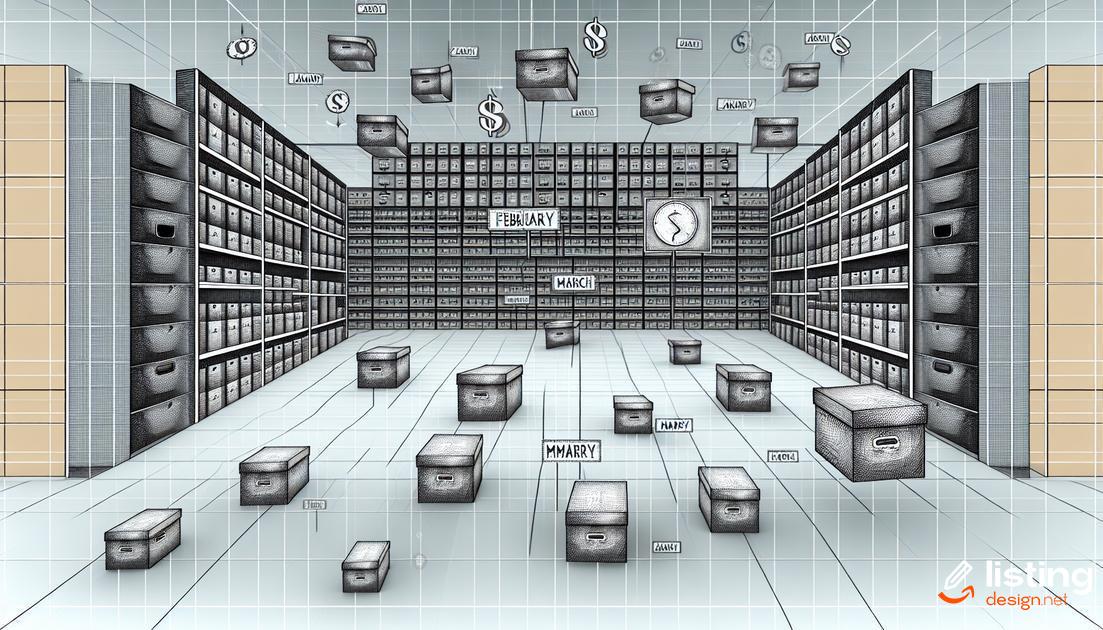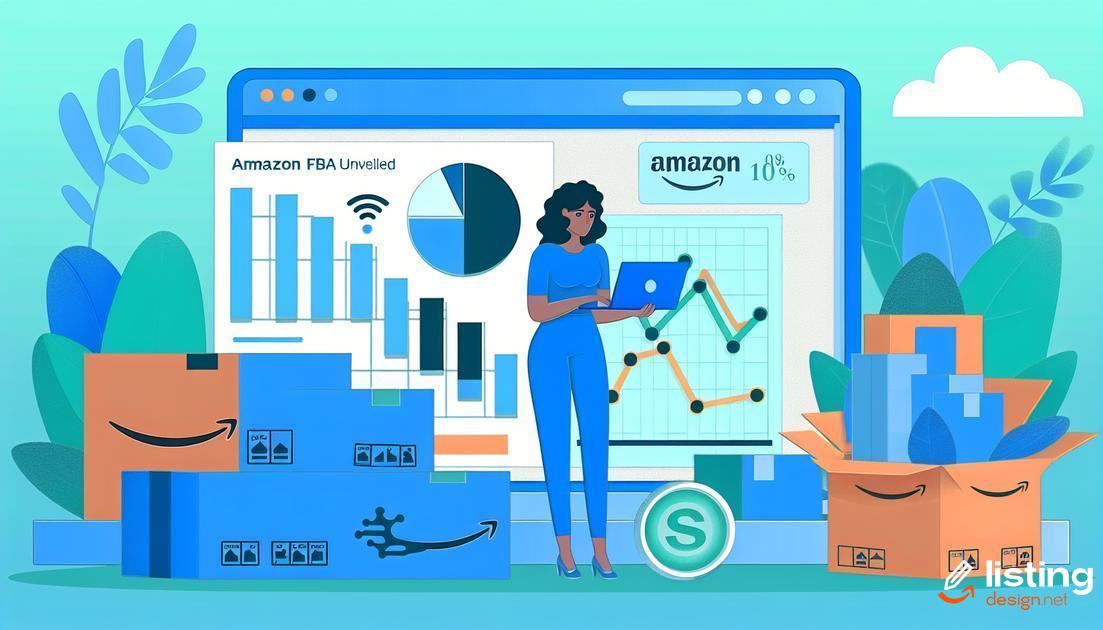If you’re considering using Amazon FBA, understanding the fees involved is crucial for your business’s success. Amazon FBA fees can significantly affect your profit margins, making it imperative to grasp all the components, from storage fees to fulfillment charges. In the sections below, we’ll guide you through everything you need to know, helping you to minimize costs and optimize profitability. Let’s dive into the details of Amazon FBA fees and uncover strategies to keep your expenses in check.
Table of Contents
Understanding Amazon FBA Fees Structure
Amazon FBA (Fulfillment by Amazon) offers sellers a streamlined way to store, pack, and ship their products. However, understanding the fee structure is crucial for maintaining profitability. The fees are divided into several categories:
Core Fees
Amazon charges two main types of core fees: Fulfillment Fees and Storage Fees. Fulfillment Fees are calculated based on a per-unit basis and include picking, packing, shipping, and handling. These fees vary depending on the size and weight of the item.
Storage Fees are monthly charges determined by the volume (cubic feet) of your products stored in Amazon’s fulfillment centers. They fluctuate between monthly and peak seasons, with higher rates during the holiday season (October to December).
Additional Fees
Besides the core fees, Amazon FBA includes several additional charges:
- Long-Term Storage Fees: Applied to items stored for over 365 days.
- Removal Order Fees: Charged when you request Amazon to return or dispose of your inventory.
- Unplanned Services Fees: Imposed for any inventory that arrives at fulfillment centers without proper labeling or preparation.
Strategies to Optimize Costs
By understanding and managing these fees, sellers can better plan their inventory, optimize storage, and strategically price products to ensure maximum profitability.
Monthly Storage Fees

Amazon charges monthly storage fees to FBA sellers. These fees depend on the volume of your inventory stored in Amazon’s fulfillment centers. The pricing is also affected by the time of the year. The rates are usually higher during the high-demand season, which is typically from October to December.
The fees are calculated based on the cubic feet your products occupy. For standard-size items, the monthly storage fee is charged per cubic foot. It’s crucial to monitor your inventory levels, especially during peak seasons, to avoid unexpected costs.
Keeping track of your inventory age is also important. Items stored for more than 365 days incur long-term storage fees, which are separate from the regular monthly storage costs. Monitoring your sales velocity and adjusting your stock accordingly can help minimize these additional charges.
Fulfillment Fees Explained
Fulfillment fees are charges by Amazon for picking, packing, and shipping your products. These fees depend on the product size, weight, and category. Standard-size items and oversize items have different fee structures.
For standard-size products, the fees are categorized into tiers based on dimensions and weight. Smaller and lighter items incur lower fees, while larger and heavier ones are more expensive. For example, a small standard-size item (weighing less than 12 oz.) will have a different fee than a large standard-size item (weighing between 1 lb. and 2 lb.).
Oversize items are those that exceed standard-size limits. These items also follow a tiered fee structure, where the size and weight affect the fulfillment cost. The bigger and heavier the product, the higher the fee.
To minimize fulfillment fees, consider optimizing your packaging to fit products into smaller tiers and choosing lighter materials when possible. Additionally, regularly review Amazon’s fee changes to stay informed and adjust your strategy accordingly.
Long-Term Storage Fees

Long-term storage fees are charges applied by Amazon when inventory remains in a fulfillment center for over 365 days. These fees are in addition to the monthly storage fees and are calculated based on the volume of the items in cubic feet. The goal of these long-term storage fees is to encourage sellers to manage their inventory efficiently and avoid overstocking.
Amazon conducts long-term storage assessments on the 15th of every month. During these assessments, any units that have been in fulfillment centers for more than a year are subject to these fees. The charges can significantly impact your profit margins if inventory is not managed properly.
Best practices to avoid long-term storage fees include regularly monitoring your inventory age, creating sales promotions to move older stock, and considering removal or liquidation options for slow-moving items. Efficient inventory management is crucial for minimizing these fees and optimizing your overall profitability on the Amazon FBA platform.
Additional Service Fees
Besides the regular fees, Amazon FBA also charges various additional service fees which sellers should consider to maximize their profits.
Label Service Fees: If your products need barcodes but you don’t want to label them yourself, Amazon offers a labeling service for a fee.
Prep Service Fees: Amazon can prepare your products, including tasks like bubble wrapping, poly bagging, and taping. While convenient, these services come with additional costs.
Removal Order Fees: If you want to remove your inventory from Amazon’s warehouses, there are charges per item or weight.
Returns Processing Fees: For each customer-returned merchandise, Amazon charges a fee which may vary based on the product.
Unplanned Service Fees: Charges occur if your shipments arrive at the fulfillment center without proper labeling or packaging, requiring extra handling by Amazon.
Understanding these additional fees helps in planning and pricing your products effectively while optimizing your overall FBA strategy.
Strategies to Minimize Amazon FBA Fees

When it comes to minimizing Amazon FBA fees, knowledge and strategy are your two best allies. One effective way to reduce costs is by optimizing your inventory levels to avoid long-term storage fees. Limit the amount of excess stock to ensure that products are moving quickly. Efficient inventory management can save you a significant amount in fees.
Consider employing a strategic pricing model that aligns with Amazon’s fee structure. By understanding how various fees are calculated, you can adjust your prices to cover costs while remaining competitive. Additionally, using Amazon’s fee calculator can help you estimate your profits and identify areas where you can cut costs.
Another tip is to utilize Amazon’s small and light program if your products qualify. This program offers lower fulfillment fees for smaller, lighter items, which can significantly reduce your overall expenses.
Improve Your IPI Score
Your Inventory Performance Index (IPI) score is crucial. A higher score not only helps you avoid storage limits but also reduces the risk of incurring excess storage fees. Keep your IPI score optimized by maintaining healthy inventory levels and reducing stranded inventory.
Choose the Right Fulfillment Centers
Placement fees add up quickly. By selecting the correct Fulfillment Centers that are closest to your customers, you can save on shipping costs. This not only minimizes your fees but also speeds up delivery times, enhancing customer satisfaction.
Regularly review and analyze your FBA fee reports to identify trends and areas where you can save. Making small adjustments regularly can lead to significant cost savings over time.
Impact of Amazon FBA Fees on Profits
The impact of Amazon FBA fees on profits is significant and multifaceted. Sellers need to grasp the full picture to adjust their strategies effectively. To start, it’s crucial to understand that FBA fees can directly eat into your profit margins if not carefully managed.
Monthly Storage Fees:
These fees are charged based on the volume of your inventory stored in Amazon’s warehouses. Products sitting in storage for extended periods can accumulate substantial costs.
Fulfillment Fees:
These costs cover picking, packing, shipping, and handling returns. The fees vary depending on the item’s size and weight, so bulkier items usually incur higher costs.
Long-Term Storage Fees:
If inventory stays in an Amazon warehouse for more than 365 days, it incurs additional long-term storage fees. Regularly auditing inventory and removing stagnant items can help mitigate these fees.
Additional Service Fees:
Amazon offers optional services like labeling, prep services, and removal orders, which can add to overall costs. These should be factored into the total FBA cost to get a true understanding of profitability.
Sellers can employ several strategies to minimize the impact of these fees. For instance, optimizing inventory levels to balance stock availability and storage costs effectively. Additionally, selecting lightweight, smaller products can help reduce fulfillment fees.
Overall, while Amazon FBA provides unparalleled convenience and access to a vast customer base, the associated fees can significantly impact profitability. Continuous monitoring, strategic planning, and understanding all facets of FBA fees are essential for maintaining healthy profit margins.
Analyzing Cost-Effectiveness of Amazon FBA

To assess the cost-effectiveness of Amazon FBA, we must evaluate all related expenses and compare them with the benefits. By understanding the fee structure, sellers can make informed decisions about their business operations.
Calculating Total Costs
The first step is to calculate all costs linked to Amazon FBA, including storage, fulfillment, and service fees. It’s essential to keep track of these expenses monthly to identify trends and make necessary adjustments.
Evaluating Cost vs. Benefit
Consider how these fees impact your profit margins. Calculate the return on investment (ROI) by comparing the increased sales and convenience provided by FBA against the expenses incurred. This analysis helps determine whether FBA is a profitable option for your business.
Analyzing Alternative Solutions
Comparing Amazon FBA with other fulfillment options, like third-party logistics (3PL) providers or self-fulfillment, can provide insights into more cost-effective strategies. Analyze factors such as shipping costs, storage fees, and service levels to find the most efficient and cost-effective fulfillment method.
Regularly reviewing the cost-effectiveness of Amazon FBA ensures you maximize your profit margins while maintaining excellent service levels for your customers.


